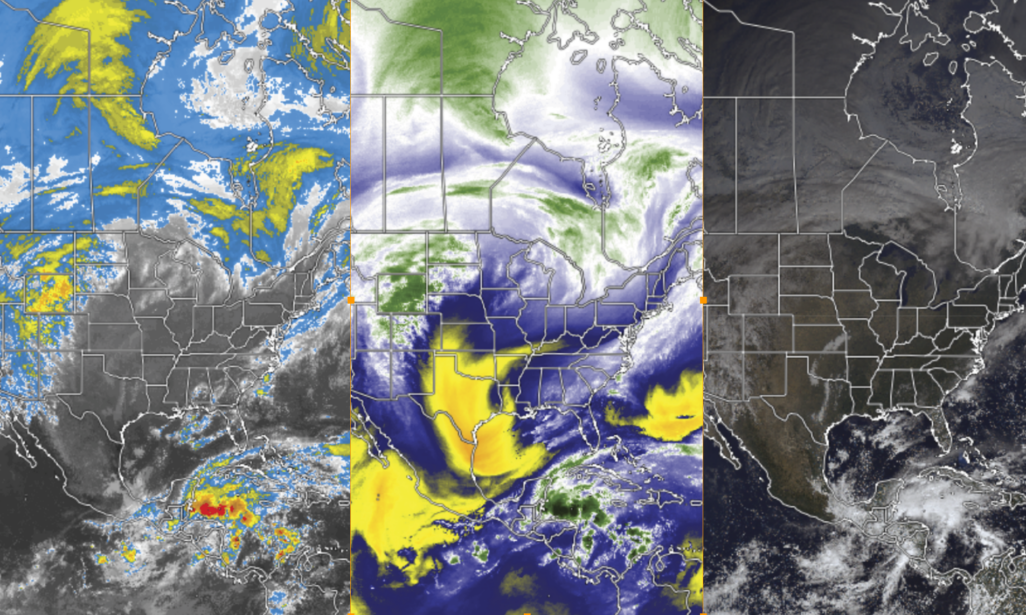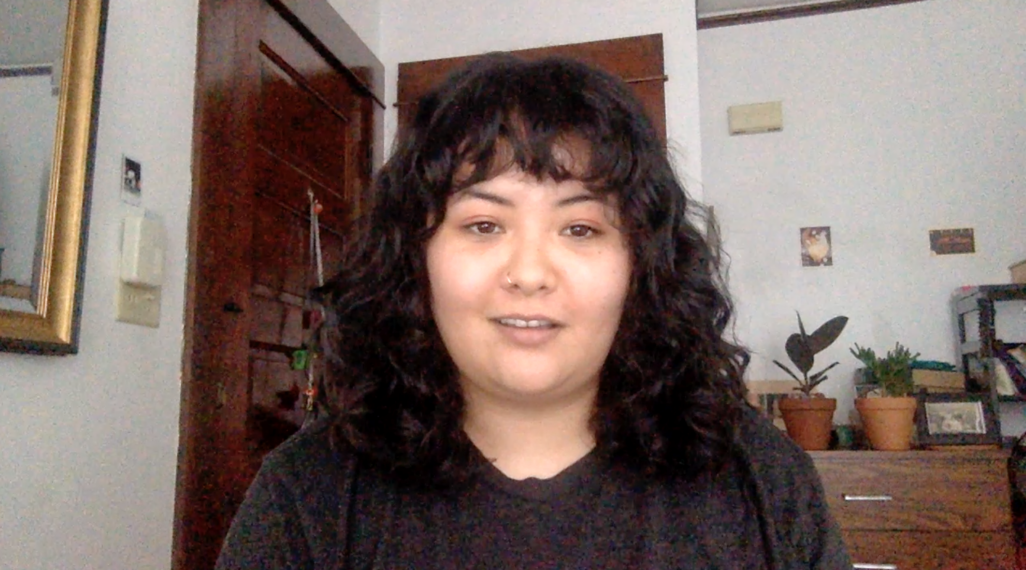Badger Summer Scholars
COVID-19 has turned education on end, including how university instructors deliver STEM learning experiences to high school students.
Earlier this year Space Science Engineering Center researcher Alexa Ross was creating the curriculum for what would become the inaugural “Satellite Science and Programming for Meteorology” residential camp for high school students. It was set to be part of the Badgers Summer Scholars program offered through the University of Wisconsin–Madison’s Badger Precollege.

The Badger Summer Scholar’s “Satellite Science and Programming for Meteorology” features an online video on RealEarth, highlighting the advantages of the different types of available imagery such as infrared (left), water vapor (middle) and true color (right) images from GOES-East. Credit: SSEC
Unfortunately, due to COVID-19 and the cancellation of in-person programming at the UW–Madison over the summer, Ross and co-collaborators, Margaret Mooney (Director of Education and Public Outreach at the Cooperative Institute for Meteorological Satellite Studies) and Scott Lindstrom (SSEC scientist) had to rethink whether, and how, they might repurpose their content to share with students and teachers at home.
In June, Chris Harry, assistant dean for Badger Precollege, contacted the team to see if they would be interested in creating a video to be posted on the Badger Precollege YouTube channel as part of their Enrichment Wednesdays series.

To take advantage of the visual YouTube format, Ross compiled and created a series of movie clips that would allow viewers to learn more about weather satellites and the data that they provide. An introductory lesson on weather satellite history and basics had already been developed by SSEC’s Rick Kohrs and Clayton Suplinski for use on a 3D globe for SSEC outreach. Ross then narrated a screen demonstration of RealEarth, an SSEC-developed software tool to visualize satellite data and imagery — highlighting the different imagery types available from one of the latest geostationary satellites, the Geostationary Operational Environmental Satellite GOES-16.
“The goal of the video is to give precollege students a taste of what they would have learned in person,” says Ross.
Ross focused on the specific benefits of a few different spectral bands available on GOES-16 and what information each provides, whether it’s tracking cloud features and severe storms or monitoring hurricanes.
Despite the cancellation of this year’s in-person programming, Ross remains hopeful that the Badger Summer Scholars camp might be available next year. She looks forward to working with students and providing them with a positive precollege experience.
In addition, she is proud of SSEC’s commitment to serving underrepresented students: SSEC had set aside funding for five scholarships for students to attend this year’s camp and learn more about satellite meteorology. She hopes to be able to award those scholarships next year.
For now, the video serves as a mini preview of not just the camp, but also the power of technology and the beauty that is our planet.
Watch the YouTube video: https://www.youtube.com/watch?v=rNt80G5Wf-U
This work is supported by SSEC2022 and the University of Wisconsin–Madison Badger Summer Scholars program.
